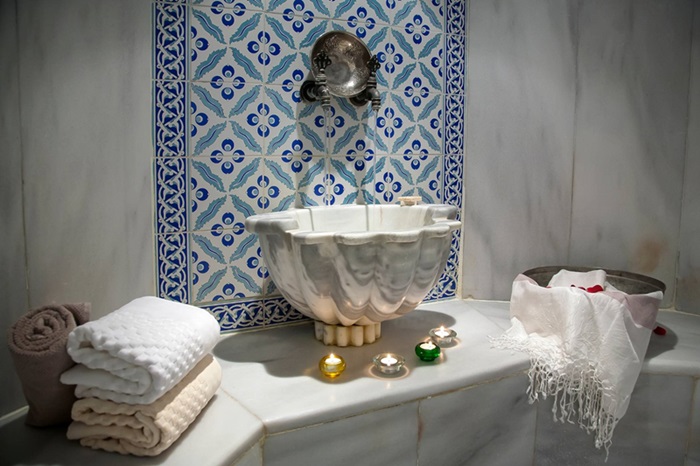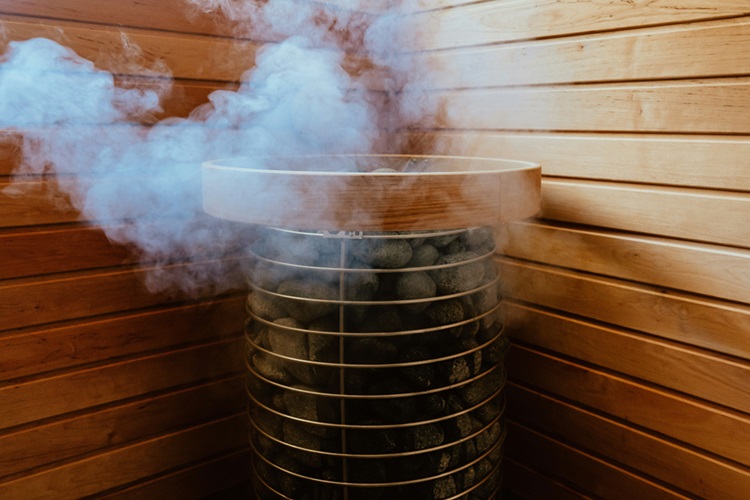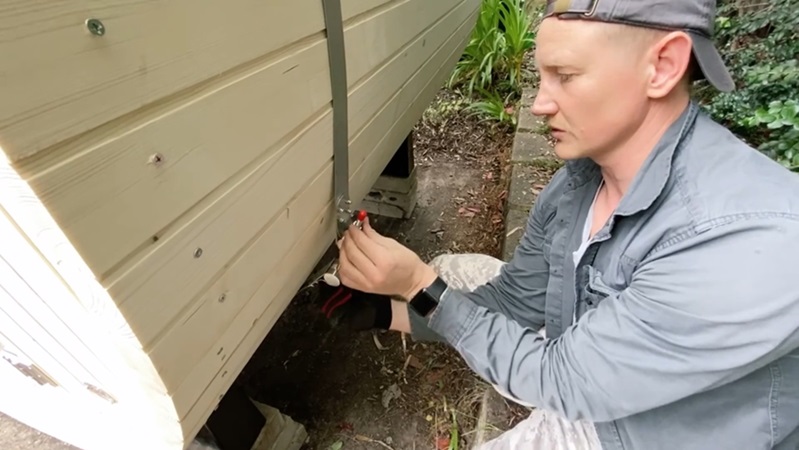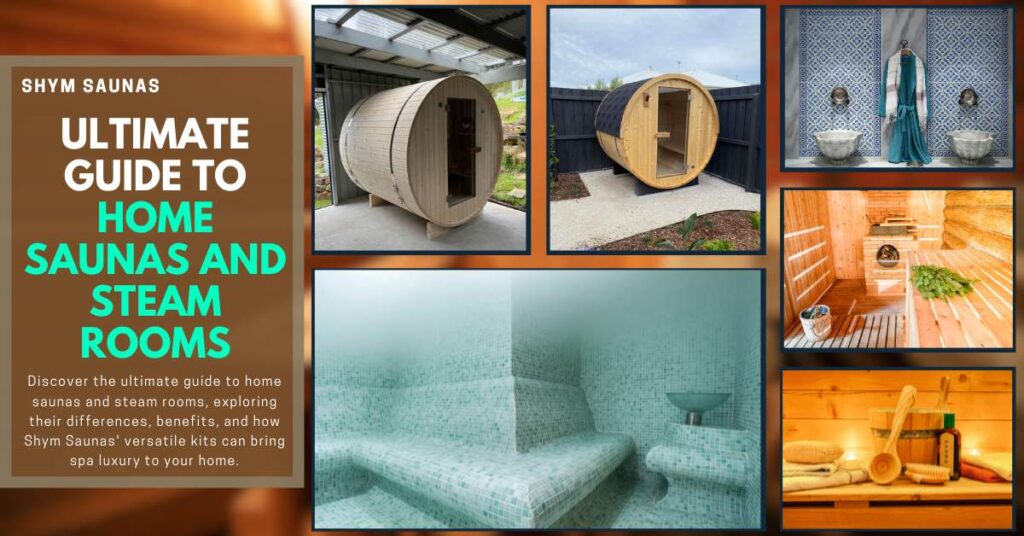Are you looking for a way to enhance your relaxation and wellness routine at home? Incorporating home saunas and steam rooms might be the thing you need. But, you might be thinking, is there a difference between a home sauna and a steam room? It can be confusing because a sauna uses steam anyway, right? Well, not exactly.
In this blog, we’ll walk you through the differences, benefits, and usage tips for both saunas and home steam rooms, helping you decide which one might suit your lifestyle and preferences best. We’ll also tackle banyas and hammams, which have their own unique practices.
No matter what experience you prefer, our sauna kits offer unparalleled versatility. From the invigorating Finnish sauna to the soothing Turkish hammam, and everything in between, our sauna kits can transform your space for personalized relaxation and rejuvenation.
Key takeaways
- Saunas provide a high-temperature, low-humidity environment that boosts circulation, promotes muscle relaxation, and encourages social interaction.
- Steam rooms offer a high-humidity experience at lower temperatures, ideal for those preferring moist heat for respiratory benefits and skin hydration.
- The banya combines intense heat and humidity with cultural rituals like birch branch whippings and cold plunges for a social and invigorating wellness experience.
- The hammam offers a soothing, steam-filled environment focused on purification, relaxation, and skin exfoliation through traditional body scrubs.
- Sauna kits can emulate the experiences of traditional saunas, steam rooms, banyas, and hammams by adjusting temperature, humidity, and incorporating specific rituals and elements.
Saunas vs Steam Rooms

Whether you’re drawn to the traditional Finnish sauna, with its wood-lined rooms and hot rocks, or the humid embrace of a Turkish-style steam room, each offers a distinct way to relax and rejuvenate right at home.
Home saunas and steam rooms serve as both a personal retreat and a way to enjoy significant health advantages, like improved circulation and detoxification, without stepping out of your door. They also provide a communal space for social interactions, making them a perfect blend of personal and social wellness.
When considering either of these options, delving into home saunas and/or steam rooms opens up a lot of factors to consider. These spaces aren’t just about indulging in a bit of warmth; primarily, you’ll need to know their specific benefits to enhanced health, relaxation, and even social interaction.
| Feature | Saunas | Steam Rooms | Banyas | Hammams |
| Temperature Range | Up to 85°C | Around 45°C | 70°C to 100°C | 40°C to 50°C |
| Humidity Level | Low (10-20%) | High (near 100%) | Moderate to High (around 60%) | Very High (near 100%) |
| Primary Benefits | Intense sweating, detoxification, muscle relaxation, cardiovascular health | Respiratory relief, skin hydration, relaxation, cardiovascular health | Muscle relaxation, circulation boost, detoxification, social interaction | Skin exfoliation, deep cleansing, relaxation, social interaction |
| Key Features | Dry heat, quick sessions, high-temperature tolerance | Humid environment, gentle heat, beneficial for respiratory issues | Combination of heat and humidity, birch branch whippings, cold plunges | Steam-filled environment, body scrubs, bathing rituals, communal experience |
| Typical Session Time | 15-30 minutes | 10-20 minutes | Several hours with multiple rounds | 1-2 hours |
| Heating Method | Electric or wood-burning stoves | Steam generators | Wood-burning stoves | Hypocaust system (hot air under floor) |
| Cultural Origin | Scandinavian (Finland) | Ancient Roman | Russian | Turkish |
| Rituals | Simple heating and cooling | Simple heating and cooling | Use of venik (bundle of small leafy branches), cold plunges | Body scrubs (kese), washing, massages |
| Social Aspect | Can be both solitary and social | Generally solitary | Highly social | Highly social |
Saunas to Dive into Dry Heat
Originating from Finland, traditional saunas offer an intense dry heat that promotes sweating, improved circulation, and muscle relaxation. The temperature in these wood-lined rooms can soar up to 85°C, with the heat source often being hot rocks over which water is poured to generate steam. Despite this steam generation, the overall humidity remains relatively low, providing a distinct dry heat experience.
For those who lean towards a communal wellness experience, saunas hit the mark. They are not just about personal health benefits but also about encouraging social interaction. Picture yourself unwinding in the sauna, and it’s easy to see how this setting fosters a shared experience. If you’re considering installing a home sauna, remember to start with a shower, enjoy the sauna for around 18 minutes, then cool down with a cold shower or plunge.
Steam Rooms
On the other side of the spectrum are steam rooms, which has a high humidity environment with temperatures around 45°C. This Turkish style steam bath offers a different sensory experience, with the moist heat feeling more intense despite the lower temperature. It’s an ideal space for those who prefer a more interactive environment, thanks to the communal use of cold water basins and showers.
The design and installation of a steam room require attention to detail, from ensuring proper waterproofing to selecting non-slip tiles for safety. Australian Sauna & Steam Rooms (ASSR) recommend considering factors like floor drainage, ceiling height, and the right materials to create an efficient and enjoyable steam room. Additionally, the placement of the steam generator and the design of the steam outlets play a crucial role in the overall experience.
Banya

The banya offers a cultural spin on the traditional sauna. Originating from Russia, the banya combines both heat and humidity, providing a unique wellness experience.
Humidity and Temperature: Banyas typically maintain a humidity level of around 60%, much higher than the dry heat of a sauna. The temperature usually ranges between 70°C to 100°C, creating a steamy environment that encourages intense sweating.
Rituals and Use: One of the hallmark rituals in a banya is the use of venik (bundles of birch or oak branches) for gentle body whipping. This practice is believed to improve circulation and exfoliate the skin. Another integral part of the banya experience is the alternating between the hot steam room and cold plunges or showers, which invigorates the body and boosts circulation.
Time: Sessions in a banya often last longer than in a sauna, with multiple rounds of heating and cooling. A typical visit can last several hours, as it’s not just about the physical benefits but also the social aspect.
Benefits: The combination of heat and humidity in a banya aids in muscle relaxation, detoxification, and improving skin health. The social and ritualistic elements also contribute to mental well-being and stress relief.
Heating Method: Traditional banyas are often fueled by wood-burning stoves, adding a distinctive aroma and authentic feel to the experience.
Hammams

The hammam, or Turkish bath, offers another cultural twist, focusing on purification and relaxation through steam, body scrubs, and bathing.
Humidity and Temperature: Hammams operate at cooler temperatures compared to traditional steam rooms, typically around 40°C to 50°C. However, they maintain nearly 100% humidity, creating a dense, steam-filled environment.
Rituals and Use: A hammam session often begins with a period of relaxation in a warm room, followed by a thorough body scrub known as kese to exfoliate the skin. This is usually done on a heated marble slab called göbek taşı. The process includes washing and rinsing, often accompanied by a soothing massage. Unlike the intense heat and sweating of saunas or banyas, the hammam emphasizes gentle purification and relaxation.
Time: A typical hammam visit can last from 1 to 2 hours, with ample time dedicated to relaxation and the various cleansing rituals.
Benefits: The hammam’s focus on steam and exfoliation helps with deep cleansing of the skin, improving circulation, and promoting relaxation. The communal aspect of the hammam also offers a social experience, contributing to mental well-being.
Heating Method: Hammams traditionally use a hypocaust system, where hot air circulates under the floor and through the walls, maintaining the desired temperature and steam levels.
Sauna Kits: The Versatile All-in-One Solution

At Shym Saunas, our sauna kits are designed to offer a versatile wellness solution that can emulate the experiences of saunas, steam rooms, banyas, and hammams. Here’s how our high-quality sauna kits can meet all of these needs.
Our sauna kits are incredibly flexible, allowing you to transform your space into either a dry sauna or a steam room. To achieve a traditional sauna experience, simply adjust the temperature to between 70-90°C and minimize humidity levels. Our kits are designed to heat up quickly and efficiently, providing you with a relaxing dry heat environment.
Contrastingly, steam rooms provide a moist heat from boiling water vapor, maintaining a high humidity level at lower temperatures (38-50°C). To achieve this, you can add a steam generator, which can boil water into steam at such low temperatures. It’s typically installed outside of the sauna room and connected to a pipe that leads into the room.
For banyas and hammams, the focus shifts to a more humid environment with specific rituals and traditions. Banyas, originating from Russia, typically involve dry heat followed by a cold plunge, promoting detoxification and relaxation. Hammams, with Turkish roots, emphasize gentle steam and exfoliation for deep cleansing and rejuvenation.
Our sauna kits can be adapted to create these experiences by adjusting temperature, humidity levels, and incorporating specific elements like cold plunge facilities or exfoliation areas.
Read More: Wet Saunas vs. Dry Saunas: What is the Best Choice for You?
Home Sauna Space and Installation Considerations

When considering the installation of a steam room or sauna at home, space is a crucial factor.
Saunas can be more versatile in terms of installation, with various indoor and outdoor options available, including easier-to-install infrared models.
Steam rooms, due to their moisture, might require more specific installation considerations, such as waterproof lighting and ventilation systems.
When planning to integrate home saunas and steam rooms, it’s crucial to consider both space requirements and installation logistics. Each type of room has its own set of considerations:
1. Space Requirements
Saunas: Generally, saunas are more flexible in terms of space requirements. They can be installed indoors or outdoors, depending on your preference and available space. Home saunas come in various sizes, accommodating anywhere from one person to larger groups.
For indoor saunas, common installation locations include basements, garages, or dedicated spa areas. Outdoor saunas, such as barrel saunas or cabin-style saunas, are an attractive addition to a garden or patio area.
Steam Rooms: Steam rooms usually require a more controlled environment due to their high humidity levels. When planning an indoor steam room, ensure that the space is adequately sealed and waterproofed.
Common locations include bathrooms or bespoke spa areas within the house. The materials used for steam rooms, such as tiles or glass, need to be moisture-resistant.
2. Installation
Saunas: Installation of a sauna varies based on its type. Traditional wood-burning saunas might require more straightforward installation but need adequate ventilation and fire safety measures. Electric and infrared saunas require electrical connections and might need professional installation, especially for indoor models.
Steam Rooms: Installing a steam room is typically more complex due to the need for a steam generator and proper ventilation to manage humidity. The steam generator requires both a water and electrical connection. The room itself must be airtight to maintain the required humidity levels, which might involve specialized construction or remodeling, especially for steam-proof doors and vapor barriers.
3. Ventilation and Moisture

Source: Unsplash
Dry Saunas: Good ventilation is crucial in a sauna to ensure air circulation, providing a comfortable and safe environment. Ventilation helps regulate temperature, prevents the buildup of gases, and maintains the wood’s longevity.
Steam Rooms: Effective ventilation in steam rooms is vital for moisture control and preventing long-term moisture buildup or damage. This includes well-designed air circulation and potentially a dehumidifier to manage humidity levels.
Maintenance and Upkeep

Dry saunas generally require less upkeep and are easier to maintain due to their dry nature. Steam rooms, on the other hand, need regular cleaning and sanitization to prevent mold and bacteria growth, owing to their high moisture levels.
Proper maintenance is key to ensuring the longevity and optimal performance of your home saunas and steam rooms. Each has its own specific maintenance needs due to their differing environments.
Ventilation and Dryness
Regularly check the ventilation system to ensure it’s functioning correctly. Proper ventilation keeps the air fresh and maintains the wood’s condition by preventing moisture buildup.
For wet saunas, ensure proper ventilation to manage humidity and prevent moisture accumulation.
Wood Care
For wood saunas, periodic treatment with a sauna-specific wood preservative can protect against moisture damage and maintain appearance. Avoid using harsh chemicals that can damage the wood or produce harmful fumes when heated.
Cleaning
Regular cleaning is vital. Wipe down benches and surfaces with a mild detergent and ensure the sauna is dry after use. For saunas with stones, inspect and replace them if they’re cracked or degraded.
Safety Checks
Regularly inspect electrical components, heaters, or wood-burning stoves for any signs of wear or malfunction.
Regularly inspect the seals and waterproofing elements to ensure no steam or moisture is escaping, which could damage surrounding structures.
Regular Cleaning
Due to the high humidity, steam rooms require more frequent and thorough cleaning to prevent mold and bacterial growth. Use antimicrobial cleaners suitable for the materials used in your steam room.
Heater/ Steam Generator Maintenance
Regularly inspect and clean the heater, following the manufacturer’s guidelines. If you use a steam generator instead of a simple heater, this may include descaling to remove mineral buildup from the water.
Benefits of a Steam Room vs Sauna

Steam saunas are renowned for their health benefits, which include improved metabolism, stress reduction, cardiovascular function, and skin rejuvenation. The high humidity in steam rooms aids in loosening mucus and relieving congestion, making them ideal for respiratory health.
On the other hand, dry saunas are excellent for muscle relaxation and can have a more intense detoxifying effect through sweating.
When comparing the benefits of steam rooms and saunas, it’s important to recognize that while they share some similarities, their distinct environments offer unique advantages.
Advantages of a Steam Room
- Respiratory Relief: The high humidity in steam rooms is particularly beneficial for respiratory health. The warm, moist air helps to loosen mucus and clear congestion, offering relief for those with sinus issues or dry respiratory tracts. Adding essential oils like eucalyptus can enhance this effect, aiding in deeper breathing and relaxation.
- Skin Health: The humidity in steam rooms can also have a rejuvenating effect on the skin. It opens up pores, aids in detoxification, and can help in skin cleansing and rejuvenation, potentially offering anti-aging benefits.
- Relaxation and Stress Reduction: The moist heat in steam rooms can be deeply relaxing, helping to reduce stress and promote a sense of well-being. This environment can be more conducive to shorter, more intense sessions of relaxation due to the high humidity.
Dry Sauna Benefits
- Detoxification and Weight Loss: The dry heat in saunas promotes intense sweating, which aids in detoxification. This process can also contribute to weight loss efforts as part of a broader health regimen.
- Muscle Relaxation and Pain Relief: Saunas are effective in relaxing muscles and easing aches and pains, making them a favorite for athletes and those with chronic pain.
- Cardiovascular Health: Regular sauna use has been linked to various cardiovascular benefits. The heat stimulates the circulatory system, potentially lowering blood pressure and improving heart function.
- Immune System Boost: Some studies suggest that the heat from saunas can stimulate the immune system, helping the body to fend off illnesses.
Conclusion
Incorporating a sauna or steam room into your home wellness routine can be a transformative experience. Whether you prefer the dry heat of a sauna or the humid embrace of a steam room, each offers unique health benefits and an oasis of relaxation in the comfort of your own home.
Whether you opt for a dry or a wet sauna, you can’t go wrong with barrel sauna kits, which can be used for either. Check out Shym Saunas today for the best barrel sauna for your home!
FAQ
A sauna uses dry heat, often from hot rocks or a closed stove, while a steam room generates moist heat from boiling water. This results in different humidity levels and heat sensations.
Yes, there are compact models designed for smaller spaces. You can choose portable saunas, sauna kits or steam generators that can be added to existing rooms.
Start with short sessions of 5-10 minutes and gradually increase as you get used to the heat. It’s important to listen to your body and exit if you feel uncomfortable.
Proper ventilation is essential to prevent moisture damage and ensure air quality. This might involve installing vents, fans, or opening a window.
Yes, but consider space, ventilation, and waterproofing. Hiring a professional can help you assess the feasibility and ensure a safe installation.
Most people can safely enjoy them, but it’s wise to consult a doctor first if you’re pregnant, have heart conditions, or suffer from low blood pressure.




